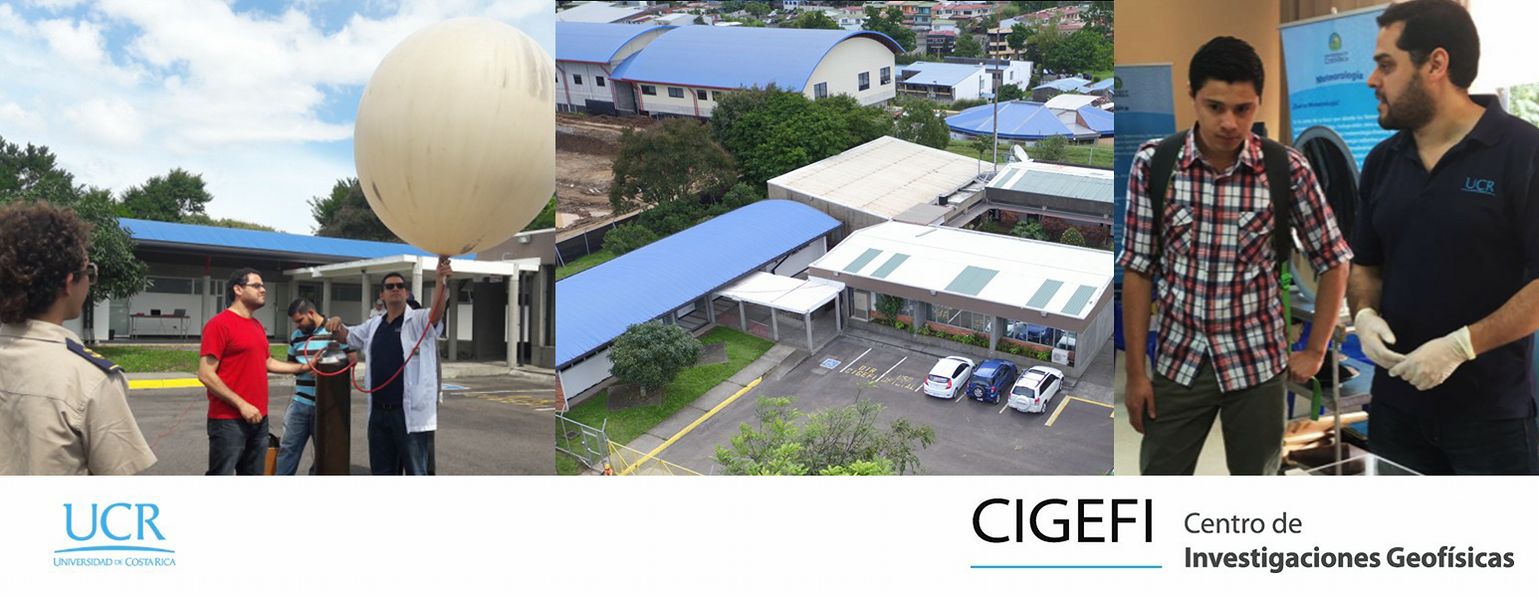Repositorio de publicaciones: Centro de Investigaciones Geofísicas

Communities in DSpace
Select a community to browse its collections.
Recent Submissions
Una lluvia de males: el régimen de precipitaciones en la Costa Rica del Progreso. Trayectoria, representaciones sociales e impacto socioeconómico (1860-1940)
(Revista de Historia, 2009) Goebel, A
Este artículo procura establecer algunas de las múltiples interacciones posibles, entre la evolución de las precipitaciones, como uno de los factores climáticos de mayor incidencia histórica en las sociedades humanas, y la dinámica económica y socioambiental de Costa Rica, en un período en el que, al tiempo que se consolidaba como Estado-Nación y se definía de forma definitiva su rol agroexportador en el mercado mundial, se construían nuevas relaciones con el medio biofísico, guiadas por la dominante e incuestionable ideología del “progreso”.
Además de la dimensión objetiva del impacto de las lluvias, el trabajo procura realizar un breve repaso por las representaciones dominantes de este factor climático, frecuentemente dicotómicas y a la vez ambivalentes, como lo deja entrever el carácter “bondadoso” o “malsano” que a las lluvias y sus consecuencias, otorgaron diversos sujetos histórico-sociales.
Bibliografía. Obras publicadas en el extranjero acerca de la República de Costa Rica en el siglo XIX. Notas compiladas y ordenadas por el Prof. Paul Biolley Matthey (1902)
(Diálogos, Revista de Historia, 2009) Díaz, R; Solano, F
Bibliografía de las obras publicadas en el extranjero sobre la República de Costa Rica, en el siglo XIX.
Batimetría, modelos de elevación digital y sus aplicaciones
(Azimuth, 2009) Lizano, O
En este trabajo se resume la historia de los sondeos batimétricos y los equipos utilizados en el estudio de la rugosidad marina. Se hace referencia a las distintas instituciones internacionales a cargo de la elaboración de cartas batimétricas, los formatos disponibles y las distintas casas comerciales que las distribuyen. Se discute sobre los distintos niveles mareográficos utilizados en algunos países y sobre el más común nivel de mareas usado para referenciar los sondeos batimétricos. Se mencionan algunos ejemplos de aplicaciones locales en los que las batimetrías son los datos de entrada para elaborar modelos de elevación digital. Estos son los datos necesarios en modelos numéricos para estudios de marinas, puertos y atracaderos en Costa Rica.
Predicción Estacional del Clima en Centroamérica mediante la reducción de escala dinámica. Parte II: Aplicación del modelo MM5v3
(Revista de Matemática: Teoría y Aplicaciones, 2009) Rivera, E; Amador, J
En la primera parte de este trabajo se determinó que el modelo de circulación general (MCG) ECHAM4.5 posee más habilidad para simular aspectos dinámicos y termodinámicos de la estructura de la atmósfera asociados a las características climáticas de la región de Centroamérica, en comparación con el CCM3.6. Por tal motivo, la información proveniente de este MCG se utilizó para conducir un experimento de reducción de escala dinámica con el modelo regional MM5v3, en el cual se generó un conjunto de simulaciones (realizaciones estadísticas) de alta resolución espacial (30 km) para el mes de enero del año 2000.
Los resultados de la reducción de escala dinámica con el MM5v3 permiten establecer que este modelo regional es capaz de reproducir adecuadamente aspectos del clima centroamericano que los MCG no pueden capturar debido a que poseen limitaciones de resolución espacial y a que no representan adecuadamente los rasgos topográficos y las interacciones físicas y dinámicas asociadas a la mesoescala. La comparación con datos derivados de observaciones indica que el MM5v3 simula la región de máximo de viento de bajo nivel que está relacionada con la corriente en chorro de los Mares Intra-Americanos, aunque la intensidad de ésta es subestimada. En cuanto a los patrones de precipitación, éstos coinciden con los obtenidos de las observaciones (seco en el Pacífico, más lluvioso en el Caribe), sin embargo, existe un exceso generalizado en la cantidad de lluvia simulada producto de los esquemas de parametrización utilizados (Grell y Kain-Fritsch). En el análisis de la desviación estándar de la muestra de doce miembros, se detectan las áreas en las que este modelo regional tiene mayor dispersión o incertidumbre, entre ellas destaca una localizada principalmente al sur de Panamá.
Descripción de dos métodos de rellenado de datos ausentes en series de tiempo meteorológicas
(Revista de Matemáticas: Teoría y Aplicaciones, 2009) Alfaro, E; Soley, F.J
Se presentan dos metodologías para el rellenado de datos ausentes, enfocadas hacia su uso en series de tiempo geofísicas. La primera se basa en la descomposición en componentes principales de la matriz de correlación de datos de una misma variable entre estaciones cercanas y en periodos de tiempo comunes. Este método multivariable permite incorporar en los valores rellenados los fenómenos de mayor escala a partir de la información de las estaciones cercanas. El segundo método es para ser utilizado cuando no hay estaciones cercanas y el rellenado se debe hacer con la información de la misma estación. Consiste en ajustar un modelo autoregresivo a la serie de tiempo y utilizar ese modelo como estimador de los datos ausentes. Se evaluaron dos algoritmos para calcular los coeficientes autoregresivos: el estimador de Burg y el propuesto por Ulrych y Clayton. El primero es apropiado para procesos estocásticos y el segundo para series determinísticas. Las dos metodologías descritos en este trabajo son recursivas: se hace una primera estimación a los datos ausentes corriendo el algoritmo ignorando los datos ausentes si es posible ó aproximándolos de forma grosera. El algoritmo se continúa ejecutando con los nuevos valores sustituyendo los valores estimados en la corrida anterior. La ejecución termina cuando la diferencia máxima de los valores estimados entre dos corridas sucesivas es menor que un valor fijado de antemano por el usuario. Los datos rellenados conservan la media y la desviación estándar original de la serie de tiempo. Estos algoritmos se adaptaron y modificaron, por medio del uso de Interfaces Gráficas con el usuario, para su uso en SCILAB, que es una plataforma similar a MATLAB pero de fuente abierta y que corre indistintamente en Windows y Linux. Ellos fueron elaborados como una actividad de extensión de la Universidad de Costa Rica.